 |
| Photo Credit: CalFireSanDiego 2002 Pines Fire |
This scene could be either along the S-2 or San Felipe Road or Montezuma Valley Road near Ranchita California. In any event, 80 or 90 % of the chaparral, trees and grassland was obliterated in an instant. But curiously I wonder back then about the Pine and Incense Cedar Trees that the locals had planted back in the late 1970s - early 1980s as a means of scenic Hwy beautification project which I believe was accomplished by local volunteers. I must admit that I have found no info on the project anywhere. By the time of the 2002 Pines Fire event, the trees were actually quite large and made the drive truly scenic, especially during those wetter years. So this post is about what has happened to the areas ecosystem with regards these trees since that terrible fire season.
 |
| Photo Credit: Mine S-2 San Felipe Rd & Pine Tree landcaping |
 |
| Photo Credit & Text by John Malcolm Penn San Felipe Valley Butterfield Stage Station |
"Here the southern trail of explorers, trappers, soldiers, and immigrants crossed ancient trade routes of Kamia, Cahuilla, Diegueno, and Luiseno Indians. On the flat southwest across the creek, Warren f. Hall built and operated the San Felipe home station of the Butterfield Mail, which operated from 1858 to 1861. Later the station was used by Banning Stages and by the military during the Civil War."
by John Malcolm Penn
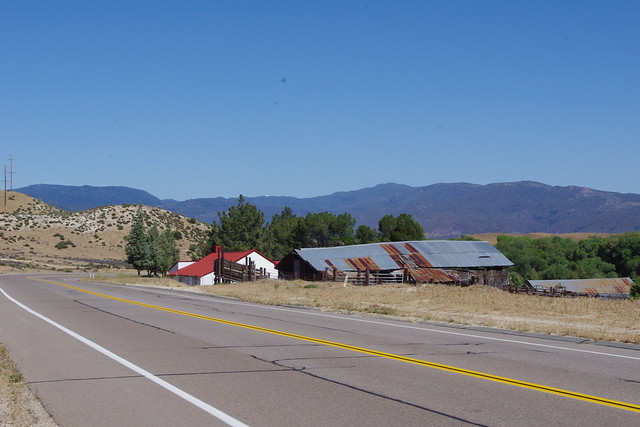 |
| Photo Credit Mine |
Butterfield Stage Station location today is on County Hwy S-2 near the intersection or Jct of State Route Hwy 79 near Anza Borrego Desert State Park. The Station has since been restored and renovated for tourists.
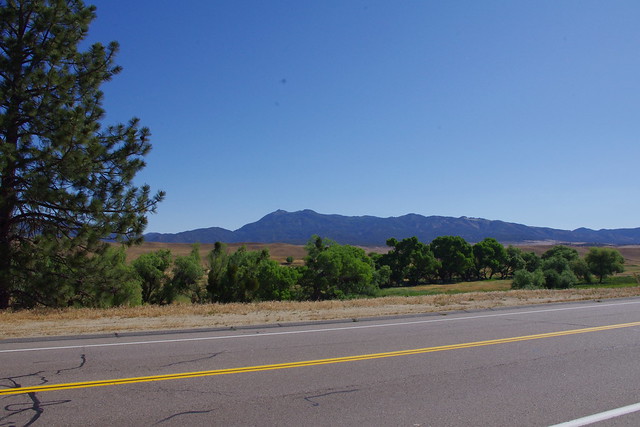 |
| Photo Credit: Mine |
This view is just east of the Stage Station and looking north towards the lush greener bottomlands of the San Felipe Valley. However from this point east to Montezuma Valley Rd leading to Ranchita, the area is dry grassland and most, but not all of the Coulter Pine & Incense Cedar trees were destroyed in the 2002 Pines fire which actually burned to the Hwy 79 Jct.
 |
| Photo Credit: Mine |
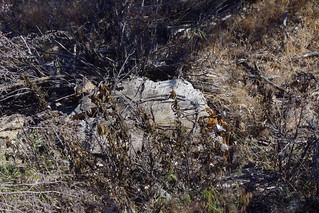 |
| Photo Mine Charred and chain sawed Stump |
 |
| image: aaroads.com |
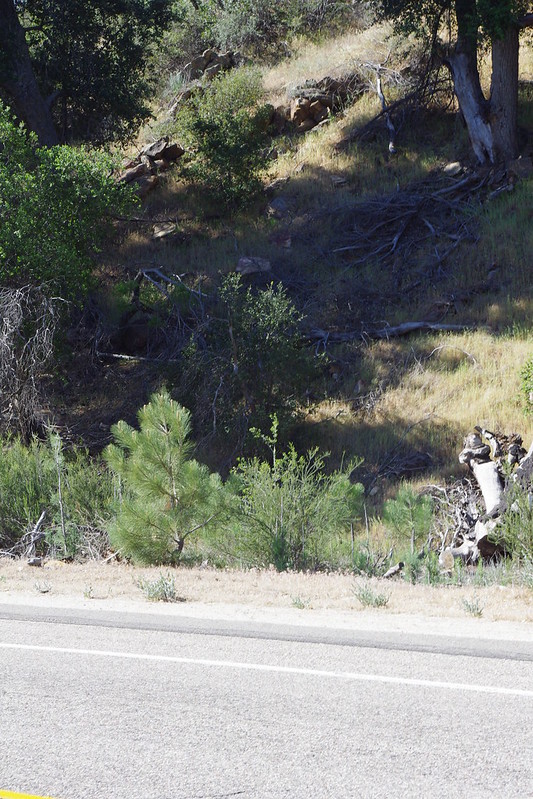 |
| Photo Credit: Mine |
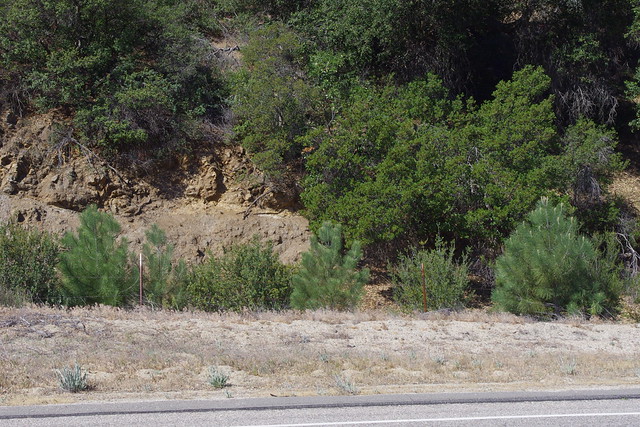 |
| All three Photos: Mine |
 |
| Above Photos: Mine |
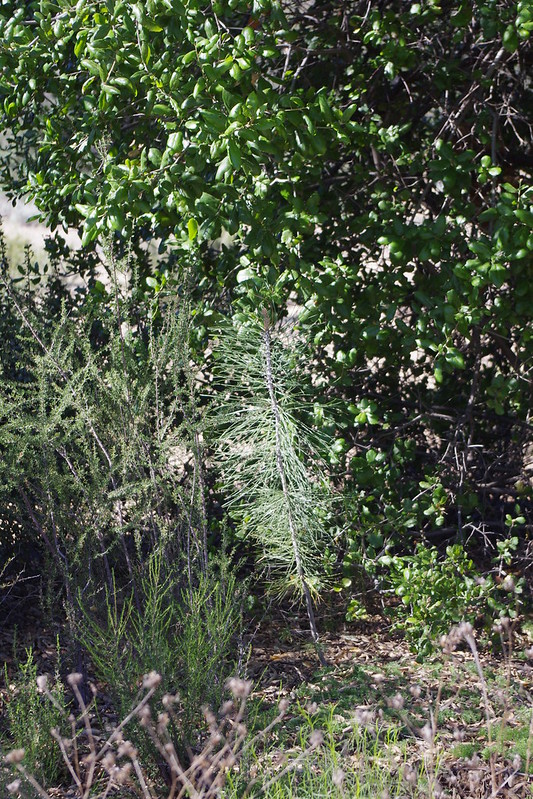 |
| Photo Credits: Mine |
Anybody see any strangulation and competition going on here ? On the contrary we see mutual cooperation. Clearly all of the examples are healthy and fit. The process of a phenomena I wrote about previously, "Phenotypic Plasticity" , for which environmental changes in which a plant finds itself will cause the plant to grow differently, yet successfully under whatever newer circumstance. The point here is that these trees are plugged into a healthy viable underground fungal network in which they are the main beneficiary as they will eventually out perform and over take the Chaparral mother Trees which will eventually yield to the larger Forest tree canopy.
These next group of photos are of Incense Cedar (Calocedrus decurrens) regeneration which I absolutely did not expect to find through dry hot excessively windy Ranchita area. Even in present day Anza I don't expect to find Incense Cedar, although I have found dried mummified remnants of them in Burnt Valley and Table Mountain and on some of Agri-Empire's property of the old Dunn Ranch complex. Still the idea that successful germination and growth in such an ecosystem with climate change was still unexpected. Take a look below at the gallery of just a handful of what were actually hundreds of examples. Mostly in my photo trek this particular day, I was only focused on Coulter Pine re-establishment. Had I not stopped and looked closely, I would have assumed the bright green patches were the same perennial chaparral plants which are common along roadways in these areas.
 |
| Photo Credits: Mine |
There were not many Incense Cedar Trees that survived the 2002 Pines Fire which devastated everything. The pines of course did fair better because their foliage density is not as great as the Cedars. Very few Cedars made it, but the two large examples above which did escape are also responsible for producing massive amounts of Seed which resulted in the 100s of seedlings that I found along the highway and back into some of the Chaparral Plant Community well away from the road shoulder. As the lower photo illustrates, it was the Silver Sagebrush, which is actually a great facilitator of Hydraulic Lift and Redistribution of water from deeper layers of subsoil for the benefit of others, that has certainly helped the survival of this small Cedar at the bottom shot.
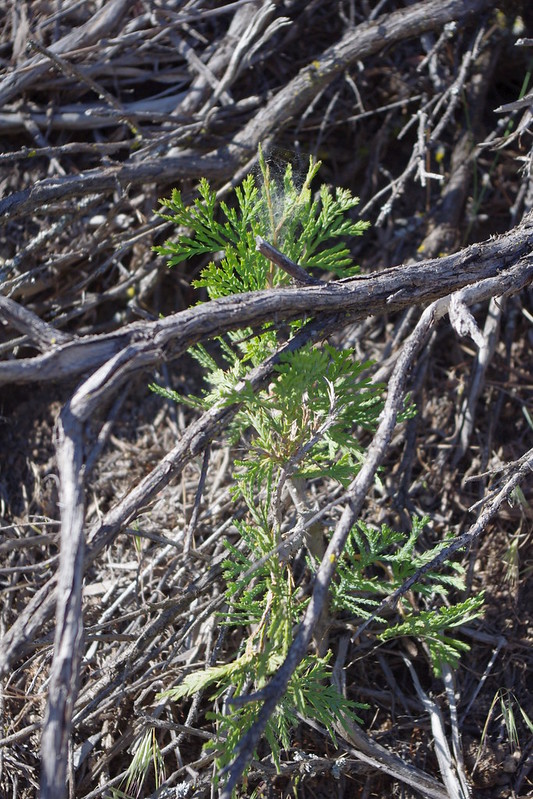 |
| Above Photos: Mine |
Hopefully private land holders and other property owners will get a clue and make practical applications on their own properties by learning from Nature. Most Governmental Institutions are too giant and disconnected to listen or take notice, but private groups and individuals can make successes on their own lands and put these to shame. Maybe they'll take notice after being embarrassed by things they should have known and taken the lead in doing all along. I doubt that will happen or take place, but either way, your local community can and will eventually look far more beautiful than it does at present!
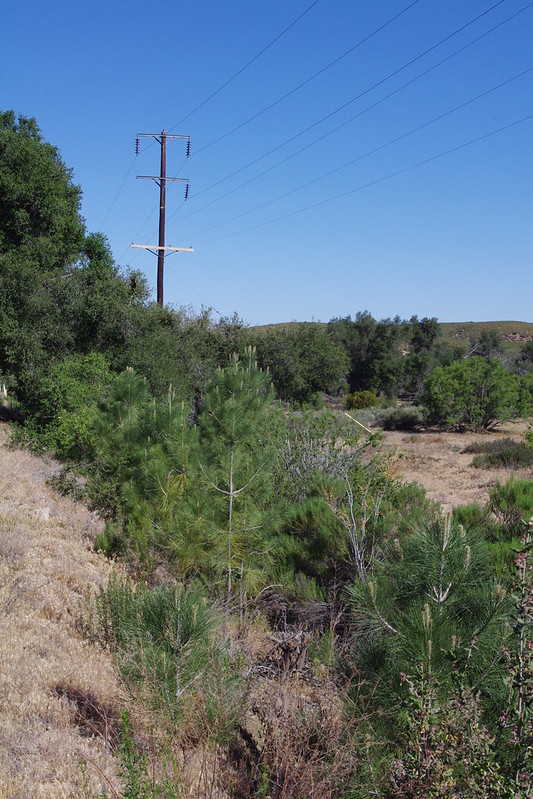


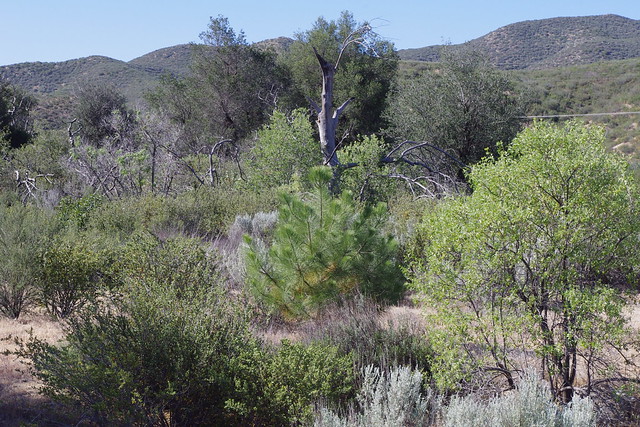
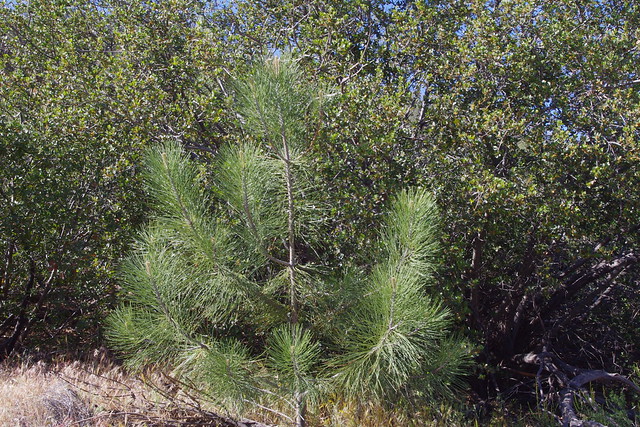


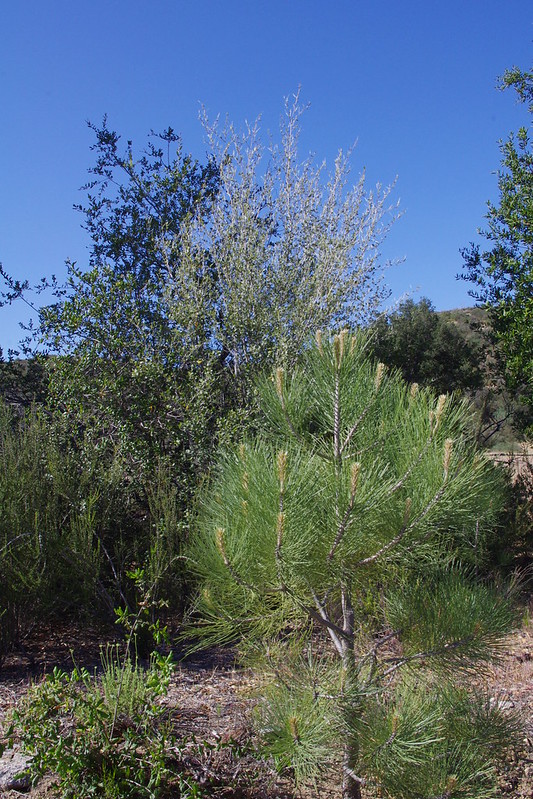

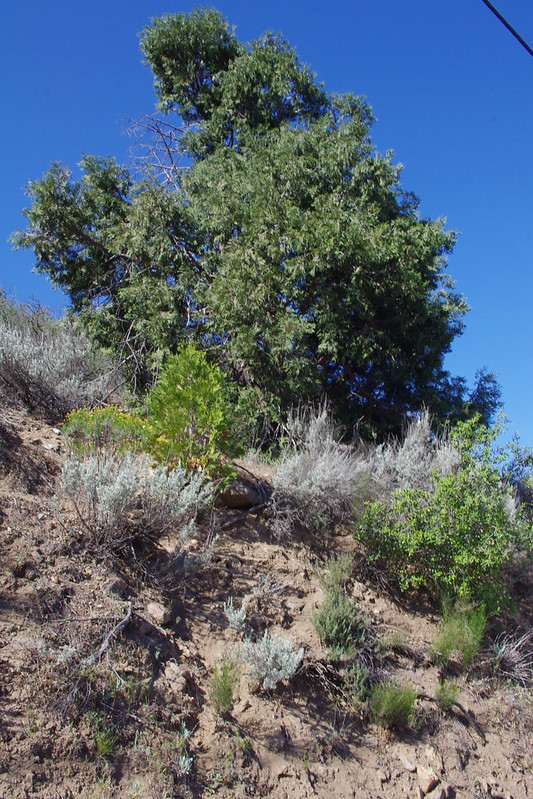
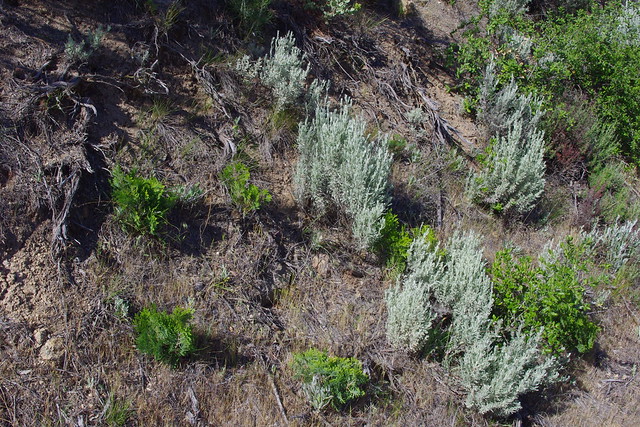

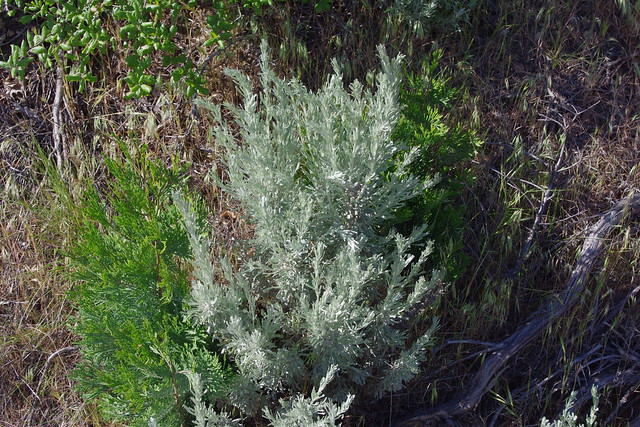
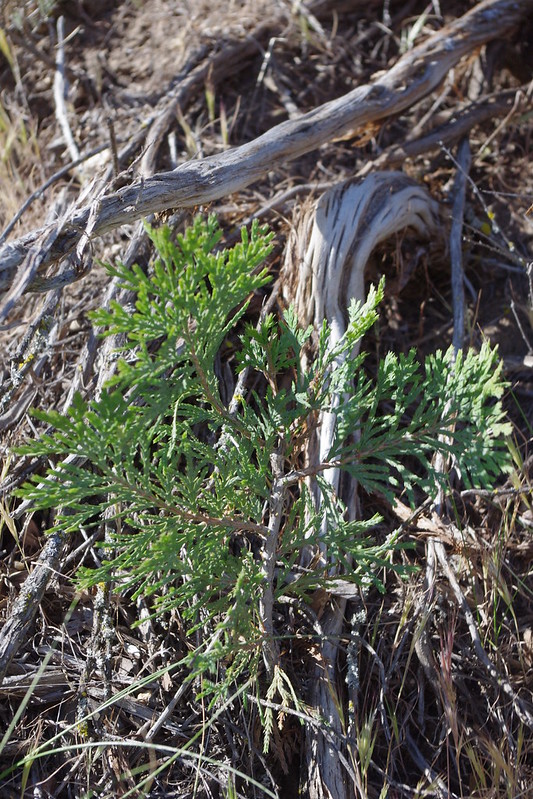
sanjay varmaJune 2, 2013 at 6:58 PM
ReplyDeleteAppreciation for nice Updates, I found something new and folks can get useful info about BEST ONLINE TRAINING
ReplyDelete
++++++++++++++++++++++++++
You know, it's one thing to make a compliment something that you genuine have an interest inf, but then another when you SPAM with a scammer's link under the guise of "Hi, how ya doing"
I guess they do things different in India/Pakistan
You've been reported.
Thank you, very interesting. Starting a orchard in Ranchita, hoping to incorporate the chaparral plants.
ReplyDeleteWhat kind of orchard, apple trees ?
Delete